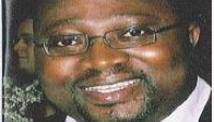One was born in St. Louis, the other became a star there.
Aside from that, Earl Weaver and Stan Musial were about as different as two Hall of Famers could be.
"Talk about your odd couple," said George Vecsey, the longtime sports columnist for The New York Times who wrote a recent biography of Musial.
Weaver was a 5-foot-6 rabble rouser whose penchant for quarreling with umpires belied a cerebral approach to managing that has stood the test of time. Musial was a humble slugger with a funky batting stance who was beloved by Cardinals fans and respected by pretty much everyone else.
Saturday began with news of Weaver's death at age 82, and by the end of the night Musial had died, too, leaving baseball to reflect on two distinguished careers rich in contrasts.
"Earl was well known for being one of the game's most colorful characters with a memorable wit, but he was also amongst its most loyal," Commissioner Bud Selig said.
Selig later released a statement after Musial's death at age 92.
"Stan's life embodies baseball's unparalleled history and why this game is the national pastime. As remarkable as 'Stan the Man' was on the field, he was a true gentleman in life," Selig said.
A three-time MVP and seven-time National League batting champion, Musial helped the Cardinals win three World Series championships in the 1940s. His popularity in St. Louis can be measured by the not one, but two statues that stand in his honor outside Busch Stadium. After his death Saturday, Cardinals of more recent vintage began offering condolences almost immediately.
"Sad to hear about Stan the Man, it's an honor to wear the same uniform," said a message posted on the Twitter account of Cardinals outfielder Matt Holliday.
Albert Pujols, who led St. Louis to World Series titles in 2006 and 2011 before leaving as a free agent before last season, offered prayers for Musial's family via Twitter.
"I will cherish my friendship with Stan for as long as I live," said a message posted on Pujols' site. "Rest in Peace."
Weaver was born in St. Louis, but his greatest success came as a manager in Baltimore. He took the Orioles to the World Series four times, winning one title in 1970.
Never a fan of small-ball strategies like bunting and stealing bases, Weaver preferred to wait for a three-run homer, always hoping for a big inning that could break the game open.
"No one managed a ballclub or pitching staff better than Earl," said Davey Johnson, who played under Weaver with the Orioles.
Johnson now manages the Washington Nationals and ran the Orioles from 1996-97.
"He was decades ahead of his time," Johnson said. "Not a game goes by that I don't draw on something Earl did or said. I will miss him every day."
While Musial could let his bat do the talking, Weaver was more than willing to shout to be heard. His salty-tongued arguing with umpires will live on through YouTube, and Orioles programs sold at the old Memorial Stadium frequently featured photos of Weaver squabbling.
Former umpire Don Denkinger remembered a game in which the manager disputed a call with Larry McCoy at the plate.
"Earl tells us, 'Now I'm gonna show you how stupid you all are.' Earl goes down to first base and ejects the first base umpire. Then he goes to second base and ejects the second base umpire. I'm working third base and now he comes down and ejects me," Denkinger said.
Musial was a quieter type who spent his career far removed from the bright lights of places like New York and Boston. But his hitting exploits were certainly on par with contemporaries Joe DiMaggio and Ted Williams.
"I knew Stan very well. He used to take care of me at All-Star games, 24 of them," Hall of Famer Willie Mays said. "He was a true gentleman who understood the race thing and did all he could. Again, a true gentleman on and off the field — I never heard anybody say a bad word about him, ever."
Dave Anderson of The New York Times recalled growing up in Brooklyn, rooting for Musial. Those Dodgers crowds helped give Musial his nickname, Stan the Man.
"I thought he was going to knock the fence down in Brooklyn, he'd hit it so often," Anderson said.
Musial did it despite an odd left-handed stance — with his legs and knees close together, he would cock the bat near his ear and twist his body away from the pitcher before uncoiling when the ball came.
If that was a lasting snapshot of Musial, the images of Weaver will stay just as fresh — the feisty manager, perhaps with his hat turned backward, looking up at an umpire and screaming at him before kicking dirt somewhere and finally leaving the field.
None of those histrionics should obscure the fact that in the end, Weaver often had the last laugh — to the tune of a .583 career winning percentage.
"When you discuss our game's motivational masters, Earl is a part of that conversation," Hall of Fame President Jeff Idelson said. "He was a proven leader in the dugout and loved being a Hall of Famer. Though small in stature, he was a giant as a manager."


